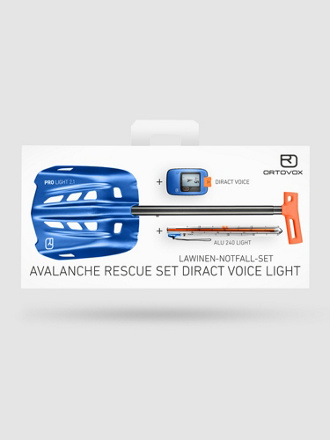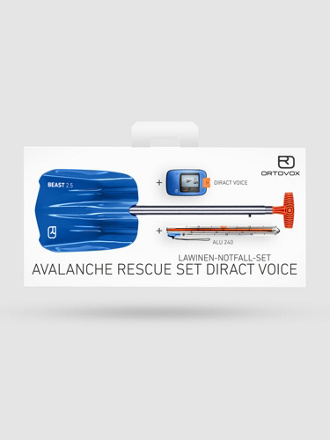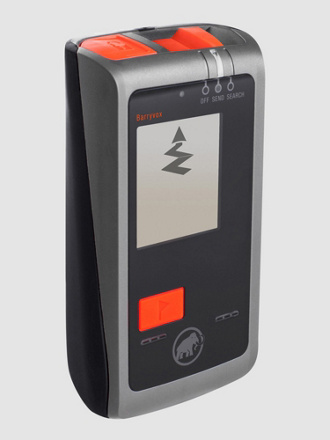
Avalanche Transceivers
(5)Avalanche Transceivers - the Search for the Best Location Finder
Emergencies can happen faster than you expect. It's a bluebird spring powder day and all you want to do is get out in the backcountry and go freeriding but without a full set of avalanche equipment that would be an extremely risky undertaking. One of the most important pieces of kit is your avalanche transceiver . This small piece of equipment could well save your life in the event of a total burial in an avalanche. This overview of Blue Tomato 's diverse range of avi-gear will explain which features to look out for when preparing for your next adventure on your splitboard or touring skis . Remember, even the shortest off-piste detours can be dangerous!Development of these little freeride helpers started in the 50's when American John G. Lawton refined the idea to use a radio transmitter to locate buried skiers. The first ever avalanche transceiver came out in the winter of 1970/71 after years of research and development. Lawton named his device the "Skadi" but it soon became known as the "Hot Dog", partly because of how it looked and partly because it replaced the avalanche dog. In fact, it was an avalanche dog that gave Barryvox its name. Supposedly, at the beginning of the 19th century, a St Bernard named Barry saved the lives of almost 50 avalanche victims. For over 25 years Barryvox was the undisputed market leader in the avalanche safety market. As the years passed, more and more competitors - such as Pieps , Ortovox and BCA - came onto the scene and the frequency range introduced by Barryvox became the standard. For a short time, different manufacturer's transceivers were incompatible as they all both searched and broadcasted on different frequencies. Ever since 1996 the European standard has been 457 KHz and applies to all current models.
Three Antennas for Faster Rescues
Every avalanche transceiver has two functions: send mode, which should always be enabled on the transceiver you're wearing before you set off, and search mode which should only be turned on in the event of an emergency and you need to locate a buried ride partner. When in send mode your transceiver sends out intermittent location signals. That's why it's incredibly important to always ride in a group when out and about in the backcountry. In search mode a transceiver can pick up the signal of a buried riding partner from up to 60 metres away. After the millennium, the world of avalanche safety underwent its most ground-breaking development: the addition of the third antenna for quicker, more precise burial location. It is now possible to track the magnetic field of the sending device, so it no longer matters what position the buried device is in. Furthermore, the area of reception is approximately circular so you don't need to rotate your own device any more, as you used to. An arrow points in the direction of the closest sending transceiver and the third antenna, which is now built into all models, allows the searching party to locate multiple burials at once. Originally, transceivers were only fitted with a single analogue antenna which showed the distance from the burial by the strength of a tone which would increase in amplitude with a stronger signal. Upon receiving the first signal you would have to rotate your transceiver around its axis to determine where the signal was strongest and keep doing so as you searched. You would get the best reception only when directly in line with the magnetic field. The arrival of the second antenna, through the introduction of a display with an arrow, made it possible to see which direction to move in in order to locate the buried party. The antennas would intersect with one representing the X axis and the other the Y. Dual antenna transceivers have a mostly elliptical field, which meant that it was still necessary to rotate the device upon receiving the first signal.
Know How to Use your Avi Gear
Your avalanche transceiver can only be put to good use as long as you have a shovel and probe in your backpack at all times. Even then, it's still possible to make mistakes. AVI awareness courses - ideally taken regularly to keep the knowledge fresh in your mind - are absolutely indispensable for safe backcountry adventures. The search is carried out over a number of steps: the rough search involves systematically searching the avalanche zone and marking the point where the transceiver first makes contact. The fine search is carried out later, close to the surface of the snow, for which different devices have different methods. Without the appropriate knowhow and education on how to use your device, precious - potentially life-saving - minutes could be lost. One system that has been implemented in ski and snowboard jackets over the years by many different manufactures is the Swedish RECCO system. A semiconductor diode built into your clothing reflects the emergency services signals, allowing the victim to be found m
A Life Saving Trio - Shovel, Probe and Transceiver
You now know all about the various features that have been implemented and developed over the last few years. All you need to do now is get yourself booked on to an avalanche training course to ensure you are comfortable using your avi-gear before your ultimate backcountry adventure can begin! Remember: after just 15 minutes under the snow your odds of survival are drastically reduced, so it is incredibly important that you approach the backcountry with the necessary respect, read up on the recent weather conditions and make sure you always have the following things with you:
- Avalanche Transceiver
- Probe
- Shovel
- Avalanche backpack
- Alpine knowhow




